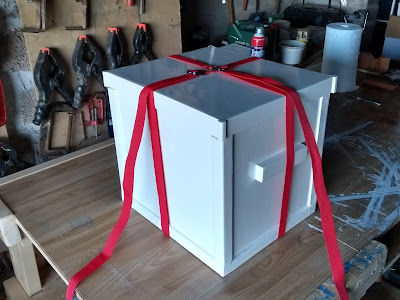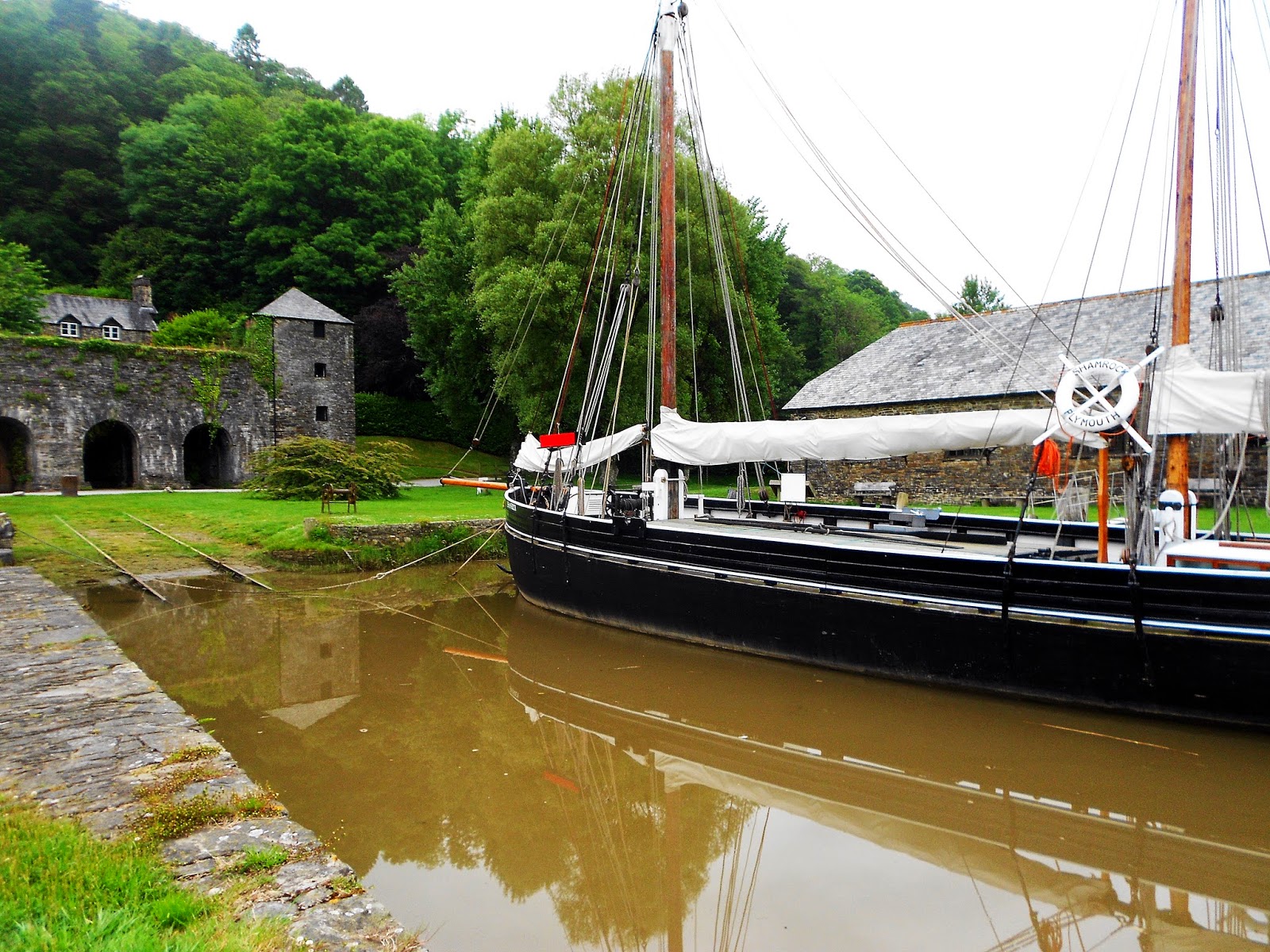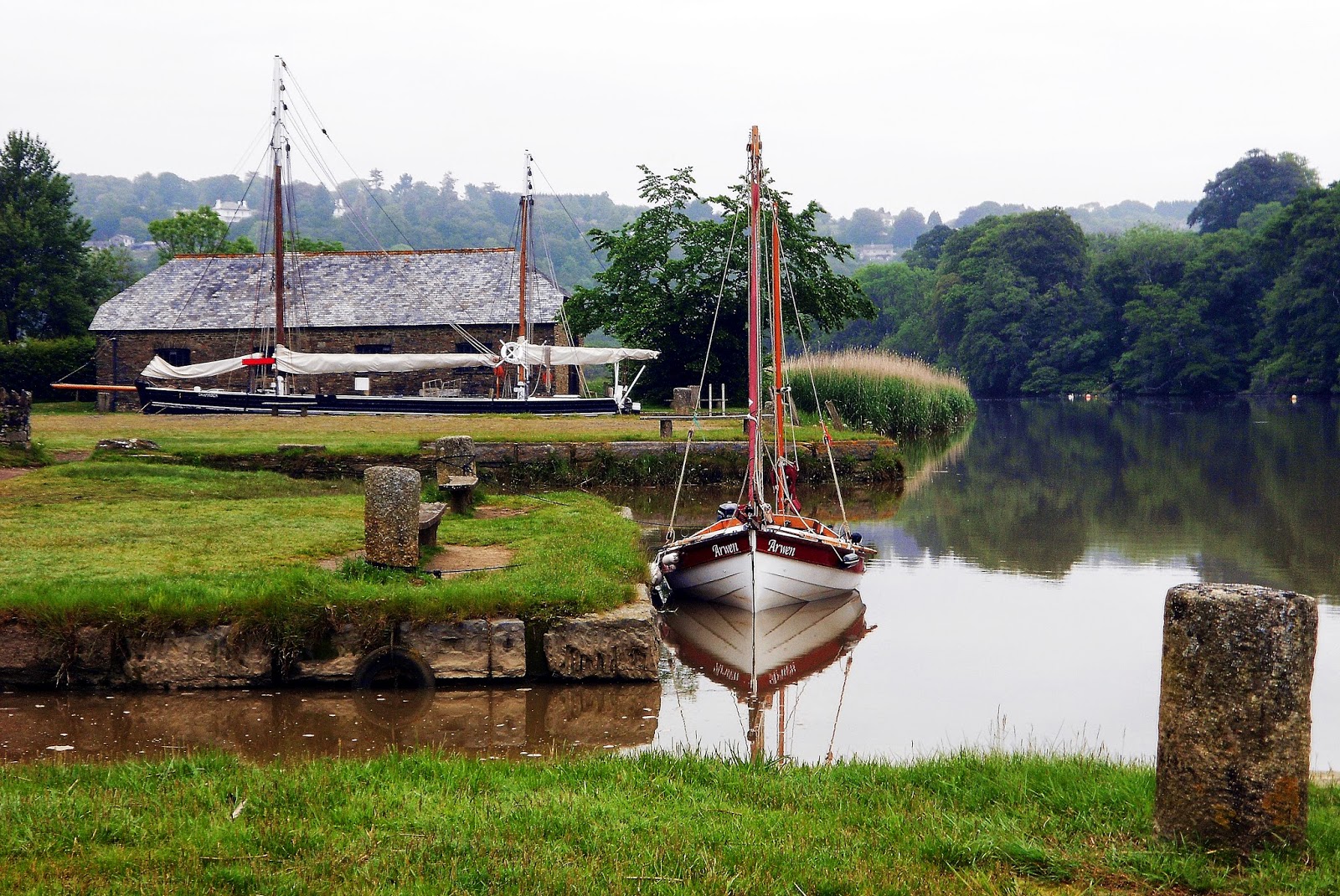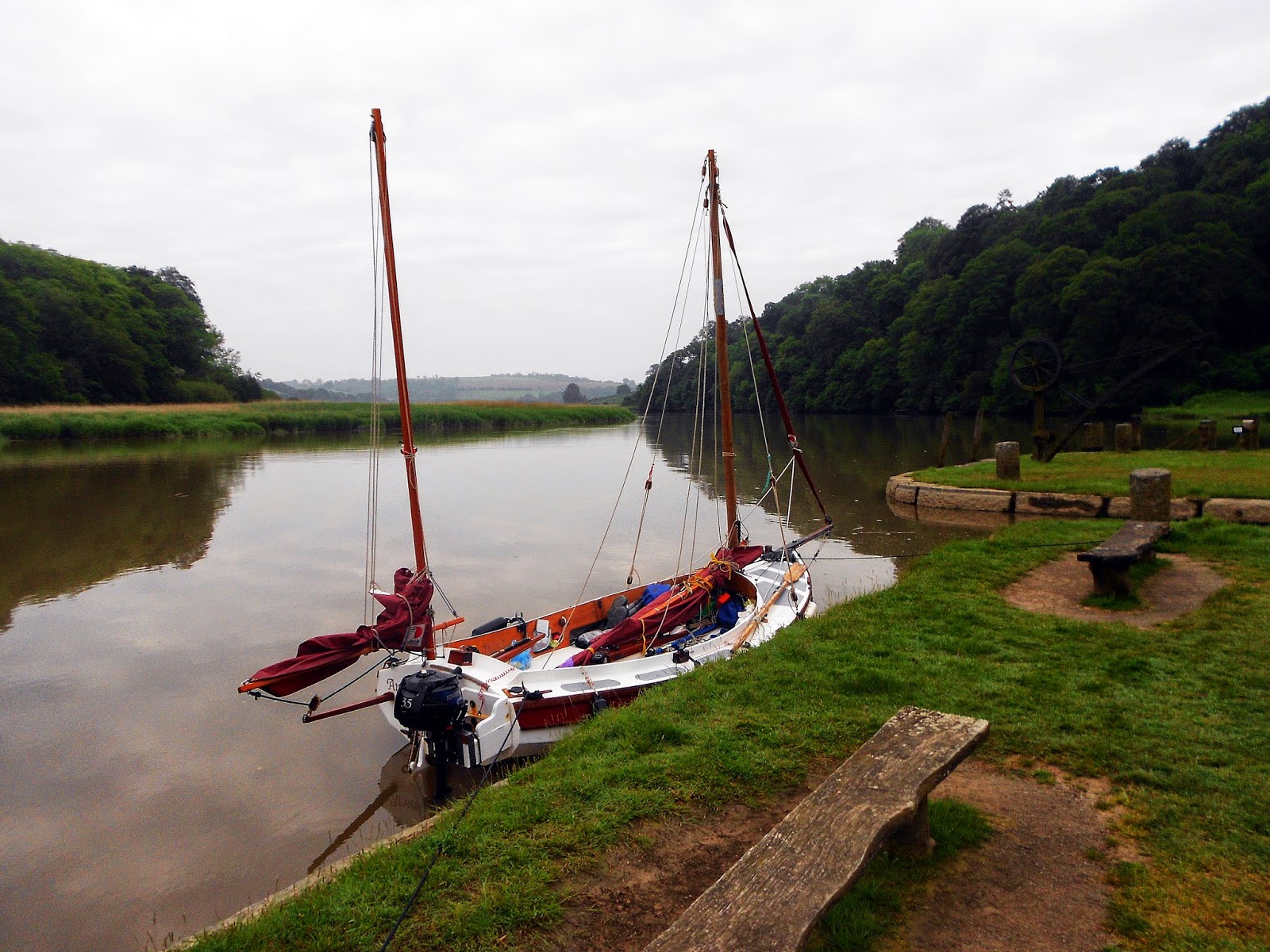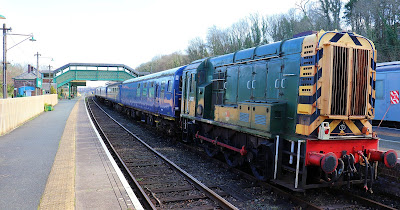In a previous recent post I commented about how taken I was with doing a sailing trip up the river Tavy to Lopwell dam. A little internet research finds that the Tavy rises on Dartmoor and gives its name to one of my favourite small towns, Tavistock and to the villages of Peter Tavy and Mary Tavy on the western flanks of Dartmoor.
Lopwell dam is the head of navigation and is around 10 miles upriver if I launch from QAB in Sutton harbour.
A traditional river quay that served nearby mines and farmland, it was also used by
the monks from nearby Buckland Abbey. The quayside once saw the export of lead
and silver and imports of coal and limestone. The mining of lead and silver
dates from the 13
th C and on the Bere Ferrers bank grew a small
community around the Lopwell and Maristow mines.
There was a working mill in
the area up until around 1872 and we passed one of the old mill stones set into
the wall of the car park. From the mid 19
th C to mid 20
th
C pleasure steamers from Plymouth used to call in as well.
A tidal fording point, a ferry operated up here until around
1930. The dam, built in 1953 by Plymouth City Council, has a fish pass to allow
salmon to migrate upstream to spawning grounds. Alongside the old pump house
there is now a butterfly meadow, an old barn converted into a camping barn and
a SW Lakes trust café block.
This is the little channel up to the quayside at Bere Ferrers
The rich wildlife around the river ranges from ancient
woodland and salt marsh, to rare insect life and internationally-important
populations of birds that over winter. I have always loved salt marshes with
their variety of plants and insects. Along with the mud flats, it
is no wonder that this area is a SSSI and local nature reserve.
This is the railway bridge at the mouth of the Tavy
Below, an aerial overview of the area.
The only photo I could find of a boat making its way up to Lopwell dam.
Roger Barnes warned me to be wary of the bridge height clearance at high tide at the entrance to the tributary. An old friend Pete, who I worked with and when on expedition to Kilimanjaro with, is a keen canoeist and warned me about how rapidly the tide empties from this tributary; and how there are extensive mudflats everywhere. He said he spoke of these 'out of experience' which I take to mean he got himself grounded in a canoe on thick estuary mud for a few hours! Warnings noted!
It is a good little day sail and overnight camping spot. Go up the Tamar on a building spring tide. Get under the bridge at the earliest opportunity and then creep up the tributary on the rising tide.
